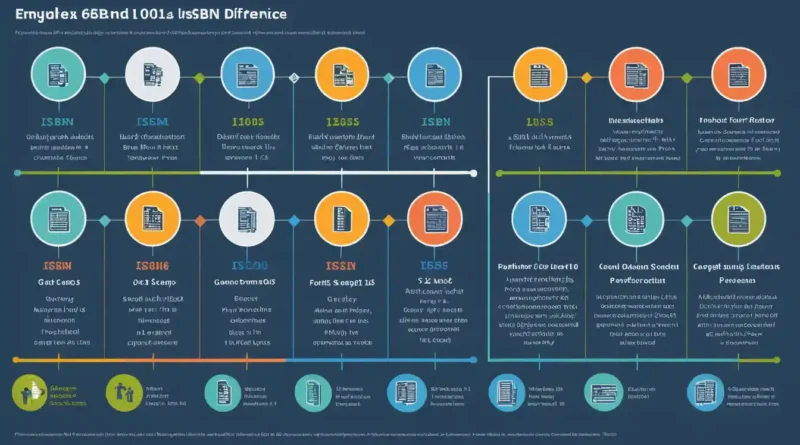9781016005555 ISBN10: 1016005555 All Product Details – A Complete Guide
Books are a fundamental part of global culture, serving as a bridge between knowledge, entertainment, and the sharing of ideas. One of the most crucial tools in the publishing industry is the ISBN, or International Standard Book Number. ISBNs help organize, track, and differentiate books in a digital and physical space. This article dives deep into ISBN 9781016005555 and its ISBN-10 counterpart 1016005555, breaking down its structure, importance, and how it facilitates the book discovery process.
In this comprehensive guide, we will explore the full product details associated with ISBN 9781016005555. From its format and components to its role in the publishing industry, this guide will provide everything you need to know.
What is an ISBN?
An ISBN (International Standard Book Number) is a unique identifier assigned to a book or publication. This identifier allows publishers, booksellers, libraries, and consumers to track, catalog, and differentiate between books. ISBNs are used worldwide to ensure that each publication can be uniquely identified, even in an increasingly vast and complex literary market.
For books, an ISBN ensures that readers are getting the correct edition and format, while booksellers can accurately stock and sell books. Furthermore, ISBNs play a significant role in royalties and tracking sales for authors and publishers. Whether in physical bookstores, online retail platforms, or libraries, ISBNs streamline the process of locating books and managing inventory.
The Evolution of ISBN: From ISBN-10 to ISBN-13
Before the widespread adoption of ISBN-13, the ISBN system was based on a 10-digit format known as ISBN-10. The shift to ISBN-13 occurred in 2007 to accommodate a larger number of books in the growing global publishing market.
ISBN-10 vs ISBN-13: Key Differences
- ISBN-10: The original 10-digit format, which was introduced in the 1970s, consists of 10 digits with no specific prefix. The 10 digits are divided into several sections: group identifier, publisher identifier, title identifier, and check digit.
- ISBN-13: The 13-digit format, introduced in 2007, is more robust and uses the EAN prefix (978) to help integrate ISBNs into the European Article Numbering system. This format ensures that there are enough unique identifiers to handle the global demand for books.
While ISBN-10 1016005555 is still used for some books, the industry now relies on ISBN-13 9781016005555 to catalog most publications.
ISBN 9781016005555 Explained: Detailed Product Breakdown
The Components of ISBN 9781016005555
Understanding the structure of ISBN 9781016005555 can help you understand its significance in the book industry. The ISBN-13 format is divided into several distinct components, each with its own purpose:
- Prefix (978): The prefix “978” indicates that the ISBN is part of the EAN (European Article Number) system. This prefix is used universally for ISBNs, ensuring international recognition.
- Group Identifier (101): This number identifies the geographical area or country where the publisher is based. For example, “101” could signify a certain region or publisher classification.
- Publisher Code (600): The publisher code is a unique number assigned to each publisher. It helps differentiate between publishers who may release different books, ensuring that each publisher has a distinct code in the ISBN system.
- Title Identifier (5555): This section refers specifically to the book’s title or edition. For ISBN 9781016005555, “5555” identifies a particular book in the publishing system.
- Check Digit (5): The last digit is a checksum, which ensures that the ISBN has been accurately generated and is error-free. The check digit is calculated using a mathematical formula, ensuring integrity across the system.
By breaking down these elements, ISBN 9781016005555 is not just a random number but a carefully designed system that provides vital information about the book and its publisher.
Why ISBN 9781016005555 is Important
Global Identification and Streamlined Distribution
One of the most significant advantages of using ISBN 9781016005555 is its global recognition. With a unique identifier for each book, ISBNs facilitate the easy identification of books, regardless of where they are sold. This is particularly important for international distribution, allowing booksellers, libraries, and readers to easily locate and purchase specific books.
Tracking and Sales Reporting
For authors and publishers, ISBNs play a critical role in tracking sales and royalties. Each ISBN is tied to a specific edition of a book, so when a book is sold, the ISBN helps identify which edition was purchased and ensures that the correct royalties are allocated.
Improved Cataloging
Libraries and bookstores rely on ISBNs to catalog books accurately. Whether you’re searching for a specific edition of a book or browsing for new releases, entering the ISBN ensures that the correct product details appear in search results. ISBNs eliminate confusion, especially when multiple editions or formats exist for the same title.
Key Product Details Linked to ISBN 9781016005555
Each ISBN is tied to essential product details that allow readers and booksellers to find and distinguish between editions of a book.
Title
The title linked to ISBN 9781016005555 helps readers identify the exact book they are searching for. For example, if a book has multiple editions, the ISBN ensures that you are looking at the right one.
Author(s)
Author information is crucial when searching for a book by ISBN. If you’re looking for works by a particular author or searching for a book from a specific collection, the author information tied to an ISBN is essential.
Publisher
Each ISBN also contains the publisher’s name, helping readers and booksellers differentiate between various publishers releasing the same book title in different regions or formats.
Edition and Publication Date
Knowing the edition of a book and its publication date helps readers find the most up-to-date version of a book, especially for reference books, textbooks, or any book that undergoes frequent revisions.
Binding Type
The binding type (e.g., hardcover, paperback, or e-book) is crucial for buyers when choosing which format they want to purchase.
How to Use ISBN 9781016005555 to Find a Book?
Finding a book using ISBN 9781016005555 is straightforward. Whether you are purchasing online or looking for a book in a library, you can search for the ISBN directly in the search bar of your preferred platform.
ISBN Lookup Tools
Many websites provide ISBN lookup tools where you can enter the ISBN to retrieve detailed product information. Some popular platforms include:
- Amazon: Simply type the ISBN into Amazon’s search bar to find the book and related product details.
- Google Books: Offers comprehensive search features for ISBNs, including reviews and pricing.
- Library Databases: Libraries often provide access to ISBN search tools through their catalogs.
ISBN and the Publishing Industry
Benefits for Self-Published Authors
For authors who self-publish, obtaining an ISBN is crucial for distributing their work through major retailers, libraries, and bookstores. It ensures their book is professionally recognized and searchable across platforms.
ISBN for Libraries and Bookstores
Libraries and bookstores rely on ISBNs to organize and catalog books, enabling them to efficiently find and stock titles. ISBNs also help with ordering and inventory management, reducing errors in the system.
ISBN in the International Book Trade
ISBNs play a vital role in the global trade of books, ensuring that books are identified, ordered, and sold correctly across countries. Publishers can use ISBNs to track their books in international markets and ensure that their work reaches a global audience.
The Future of ISBNs
Technological Advancements
The ISBN system will likely continue to evolve as the publishing industry adapts to new technologies. For example, incorporating blockchain into ISBN systems could provide more transparent royalty tracking and distribution systems.
Digital ISBNs
With the rise of e-books and digital publishing, ISBNs will continue to be crucial in identifying digital publications. The future of ISBNs may see more integration with online platforms to streamline digital book discovery.
Common Misconceptions About ISBNs
ISBN-10 vs ISBN-13
Many people still confuse ISBN-10 with ISBN-13. The key difference lies in the format: ISBN-10 is a 10-digit identifier, while ISBN-13 uses 13 digits. Both serve the same purpose but differ in the system’s capacity to assign unique identifiers.
FAQs
What is the difference between ISBN-10 and ISBN-13?
ISBN-10 uses 10 digits, while ISBN-13 uses 13 digits. The latter format was introduced to accommodate the global increase in published books and to integrate with the EAN system.
How can I find a book using its ISBN?
To find a book using its ISBN, simply enter the ISBN into the search bar of online bookstores or library databases.
Why do I need an ISBN for self-publishing?
An ISBN is necessary for selling and distributing your self-published book across major platforms and bookstores. It also helps you track sales and royalties.
What is the cost of getting an ISBN for my book?
The cost of an ISBN varies by country and registration agency, but typically ranges from $50 to $150 per ISBN.
How do ISBNs impact book marketing and distribution?
ISBNs ensure that books are accurately cataloged and identified across international markets, making it easier to sell, distribute, and track.
Conclusion
ISBN 9781016005555 is a vital tool in the world of publishing. By understanding its structure, importance, and how to use it to find books, both readers and publishers can navigate the complexities of the book market more efficiently. Whether you are an author, publisher, or simply a reader looking for specific editions, knowing how to leverage ISBNs can make the process simpler and more reliable.

